Xiangzeng Zhou
Large Scale Long-tailed Product Recognition System at Alibaba
Feb 09, 2021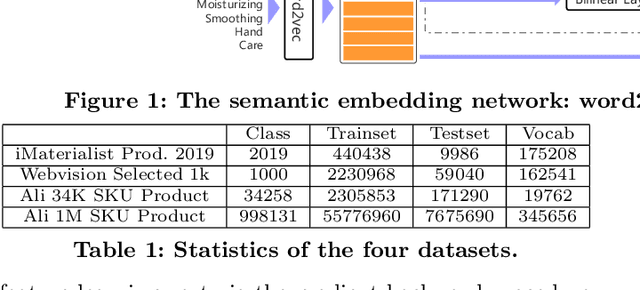

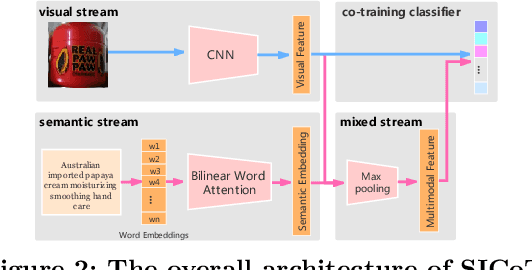

Abstract:A practical large scale product recognition system suffers from the phenomenon of long-tailed imbalanced training data under the E-commercial circumstance at Alibaba. Besides product images at Alibaba, plenty of image related side information (e.g. title, tags) reveal rich semantic information about images. Prior works mainly focus on addressing the long tail problem in visual perspective only, but lack of consideration of leveraging the side information. In this paper, we present a novel side information based large scale visual recognition co-training~(SICoT) system to deal with the long tail problem by leveraging the image related side information. In the proposed co-training system, we firstly introduce a bilinear word attention module aiming to construct a semantic embedding over the noisy side information. A visual feature and semantic embedding co-training scheme is then designed to transfer knowledge from classes with abundant training data (head classes) to classes with few training data (tail classes) in an end-to-end fashion. Extensive experiments on four challenging large scale datasets, whose numbers of classes range from one thousand to one million, demonstrate the scalable effectiveness of the proposed SICoT system in alleviating the long tail problem. In the visual search platform Pailitao\footnote{http://www.pailitao.com} at Alibaba, we settle a practical large scale product recognition application driven by the proposed SICoT system, and achieve a significant gain of unique visitor~(UV) conversion rate.
* Acccepted by CIKM 2020
Weakly Supervised Learning with Side Information for Noisy Labeled Images
Sep 04, 2020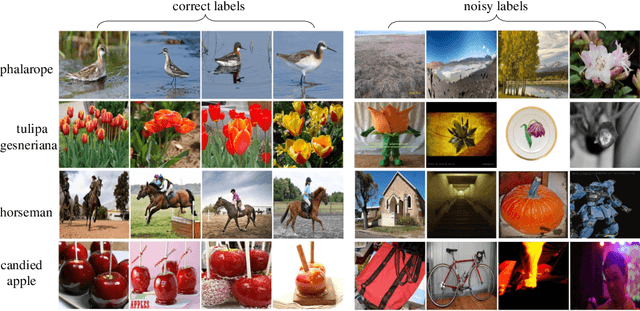

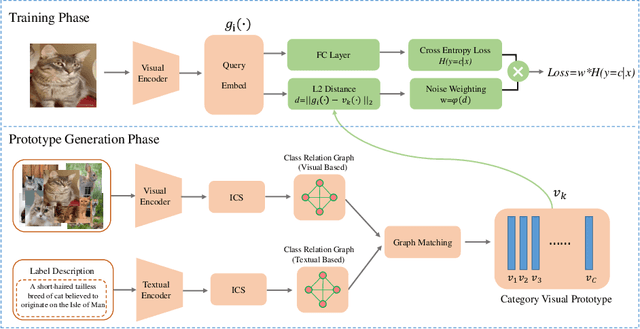
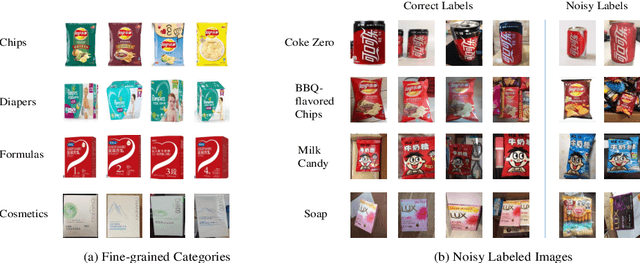
Abstract:In many real-world datasets, like WebVision, the performance of DNN based classifier is often limited by the noisy labeled data. To tackle this problem, some image related side information, such as captions and tags, often reveal underlying relationships across images. In this paper, we present an efficient weakly supervised learning by using a Side Information Network (SINet), which aims to effectively carry out a large scale classification with severely noisy labels. The proposed SINet consists of a visual prototype module and a noise weighting module. The visual prototype module is designed to generate a compact representation for each category by introducing the side information. The noise weighting module aims to estimate the correctness of each noisy image and produce a confidence score for image ranking during the training procedure. The propsed SINet can largely alleviate the negative impact of noisy image labels, and is beneficial to train a high performance CNN based classifier. Besides, we released a fine-grained product dataset called AliProducts, which contains more than 2.5 million noisy web images crawled from the internet by using queries generated from 50,000 fine-grained semantic classes. Extensive experiments on several popular benchmarks (i.e. Webvision, ImageNet and Clothing-1M) and our proposed AliProducts achieve state-of-the-art performance. The SINet has won the first place in the classification task on WebVision Challenge 2019, and outperformed other competitors by a large margin.
 Add to Chrome
Add to Chrome Add to Firefox
Add to Firefox Add to Edge
Add to Edge